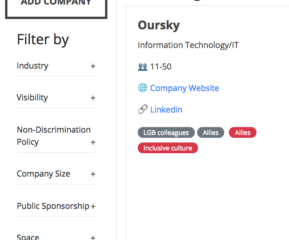
Let’s face it; with the exception of maybe Bill O’Reilly, no one likes to argue. Be that as it may, that’s not to say we shouldn’t be prepared for conflict it does inevitably erupt. You and a co-worker are having a dispute over the assumptions and logic for your build? Your cat won’t stop lying down directly on top of your keyboard as you write this article ? How do you deal with it?
The answer is straight forward: conflict resolution. For people working in team-based environments, such as in a startup, for example, this is especially important. But, how does any team get to a point where conflicts aren’t an issue? To help you out, we’ve put together a list of five actionable approaches you can apply next time.
Attack the problem, not the person

Nothing escalates an argument more than forgetting the actual issue(s) at hand and attacking someone’s personal character instead. Their approach is based on their character, after all, right? This tendency is an example of an Abusive Ad Homonym, one of many common illogical fallacies. An illogical fallacy is any incorrect and/or illogical contribution to an argument that automatically devalues whatever is being stated. If you’re interested in learning more about logic, here’s a Wikipedia list.
One of Ourksy’s key values is self-management, and to help facilitate this value, we often rely on data. Data can be as simple as using a simple time-tracking software called Toggl, which helps team members see where their time is being used. Instead of allowing personal feelings to get involved when discussing how to allocate time to assignments, Toggl’s data shows what someone is doing and helps everyone identify potential time wasters and offer solutions to meet deadlines.
Repeat your arguer’s belief

What happens more times than not in a conflict is not so much disagreement as much as miscommunication. All parties involved could be arguing for the exact same thing, but if that isn’t being clearly received, the conflict will inevitably remain at a standstill.
Sometimes, even the basic principle of active listening and allowing other members of your team to speak may not be enough. Fortunately, there’s a quick fix to this problem. Ask all parties involved to physically write out everyone else’s argument. Once this is done, have everyone correct each other until all parties have understood one another’s answers. This ultimately will help ensures that everyone has taken the time to consider the other’s perspective.
Define the disagreement

Once it’s clear that the conflict is due to a disagreement as opposed to miscommunication, it’s time to discover what it is that’s being disagreed upon. At Oursky we like to make things simple, and that can translate into drawing simple diagrams, and/or writing down focus words. Using a whiteboard is a simple solution. From here, all those involved can visibly reference what it is they should be focusing on and which part of the process their comment fits into. It could be that someone is talking about idea generation while the other person is talking about distribution. Diagrams can help anchor an entire team to discuss each part of the process in turn.
Find a common ground, no matter how insignificant

Even though you may disagree on the macro level, with enough digging you are guaranteed to find at least some agreement on the micro level.
Maybe you are having a disagreement with a co-worker over the design of an app logo. He or she wants the color of the logo to be a certain shade of blue, but you think it doesn’t match the brand character. You’re both have equal say in the project, since Oursky has a mostly flat structure. At this point in Oursky’s design process, we are finished the wireframes and debating about style and art direction. Our proposed colour shade will factor in the client company’s palette, their associated brand character, and best design practices. As we go through each factor in turn, we are also sharing our working logic and making it easier to discuss why we have different conclusions. When you are able to at least agree on something, coming to an agreement on the larger issue becomes more achievable.
At Oursky, we also like to provide opportunities for our team members to bond outside of work so that they become more appreciative of each other’s perspectives. We have an arcade machine, gaming PC, VR console and a ping pong and foosball table. You may disagree with someone over the UI design of a new product, but you’re probably not going to stay angry when you’re having a good laugh over a ping pong game later on.
Keep conflict transparent

To disagree with someone is not a bad thing. The possibility for negativity only lies in how you resolve the disagreement. To encourage people to handle things in a positive and mature way, Oursky implements full transparency. The company’s Slack channels are open and internal documents are accessible to everyone with an Oursky account. This transparency is firstly based on the principle of trust — that the founders trust the team, and that everyone in the company will do the right thing. The right thing includes engaging disagreements in a respectful manner, since everyone else can see the messages exchanged.
In addition, knowing that other people have the ability to view what we’re doing incentivizes us to do better and more thoroughly think our contributions through from more perspectives.
Lastly, transparency mitigates conflicts. A team that can see all work being conducted at all different levels can spot potential issues much quicker than if that work is confined to just a small group of separated members. Problems that are identified earlier by someone with the expertise to help can help eliminate potential conflicts from surfacing after something as gone down the wrong path for too long.
So there you have it. As any quick glance into the business section of a bookstore will tell you, conflict resolution is a skill that takes a lifetime to develop. Our list of tips may not solve every argument, but these actionable items give you a solid starting point.
Of course, if you have any suggestions for dealing with conflict, we’d love to hear from you! Please leave us a comment below!










